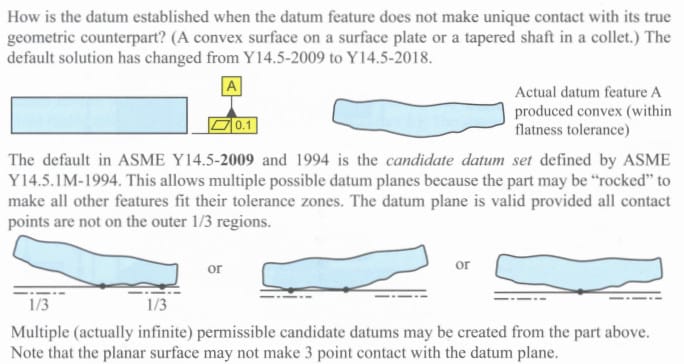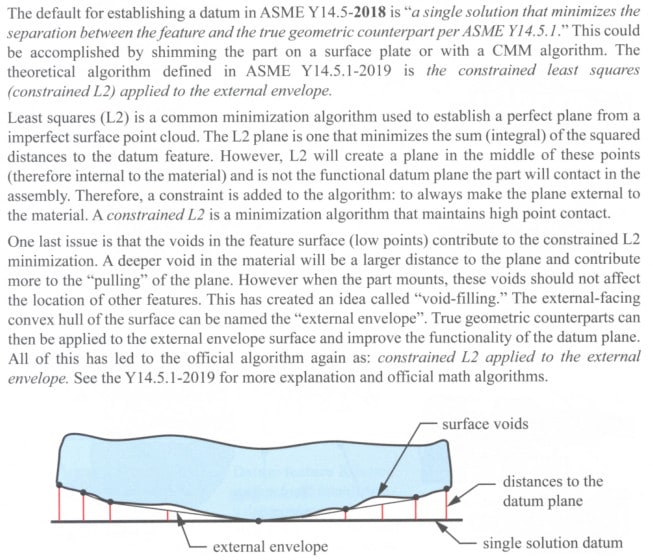Burunduk
Mechanical
- May 2, 2019
- 2,580
Since both the 2009 and 2018 versions of Y14.5 reference Y14.5.1M-1994 while Y14.5.1-2019 is described in the ASME website as "consistent with the principles and practices of ASME Y14.5–2009", who is supposed to be using ASME Y14.5.1-2019, and what for?
Also, what exactly is the "single solution" for datum stabilization mentioned in Y14.5-2018 and only covered in Y14.5.1-2019 (I don't have the 2019 document)? Is it based on Least Squares or something else?
Also, what exactly is the "single solution" for datum stabilization mentioned in Y14.5-2018 and only covered in Y14.5.1-2019 (I don't have the 2019 document)? Is it based on Least Squares or something else?


